What are the types of rice and what are their features
Rice, or "Saracen grain", is one of the oldest and most popular cereals in the world. Rice groats are used to prepare a variety of dishes on all continents. This cereal is not only tasty, but also healthy.
In the article, we will consider what rice is, how many varieties of it exist, the classification of rice depending on the method of processing, what is short-grain rice, a type of processed rice, what is the name of yellow rice and much more.
The content of the article
What is rice, where and how it grows
Rice is a member of the Cereals family. For agricultural purposes in a tropical, subtropical climate, annual sowing rice is grown... The culture is also cultivated in warm regions belonging to the temperate zone.
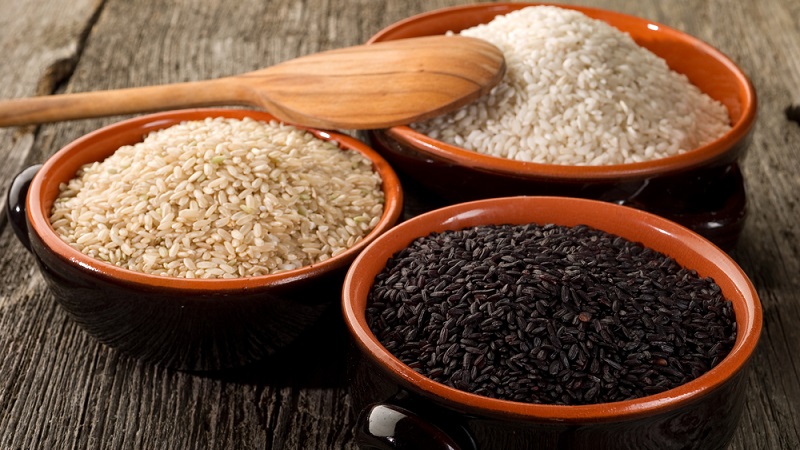
The cultivation of cereals on an industrial scale is practiced in Asian, African countries, America and Australia.
Reference. The people of China have been growing cereals for over 70 centuries. In Russia, they learned about him in the 15th century.
When grown, rice reaches half a meter in height. The plants have broad, dark green leaves with rough edges. The stem in the upper part has a panicle of spikelets, each of which has four scales. The flower has six stamens and two feathery stigmas. The grain is distinguished by a scaly coating.
Reference. A crop needs a moist environment to get a good harvest. It is successfully grown in a field flooded with water. These conditions are necessary for the seeds to ripen. Water protects them from intense sunlight, prevents weeds from growing. To harvest the crop, the field is drained.
Rice is one of the main food products of our planet.... In Asia, the name of the cereal is consonant with the word "food".
Composition, calorie content and useful properties of rice
Rice is famous for its rich chemical composition. His consider a storehouse of vitamins and other substances useful for the human body.
Reference. Maximum useful properties observed in untreated brown grain.
The caloric value per 100 g of dry product is 340 kcal. Boiled cereals it is several times lower.
The cereal consists of:
- proteins - 8%;
- fat - 2%;
- carbohydrates - 90%.
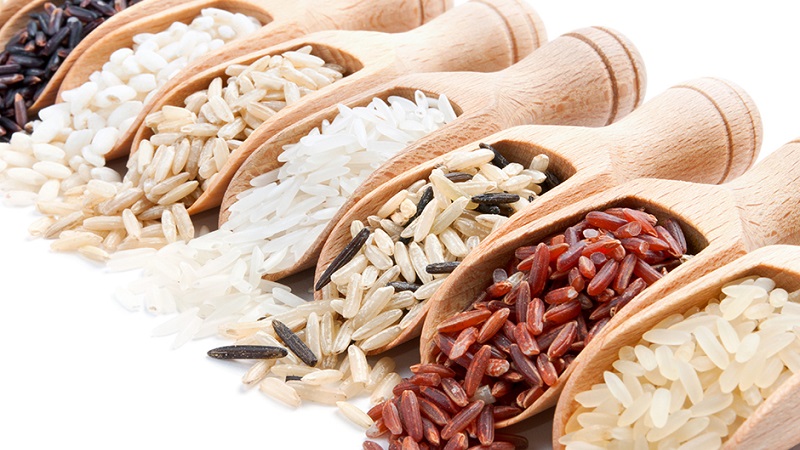
A number of nutrients are found not only in grain, but also in grain shelleliminated during the manufacture of cereals.
Rice bran is rich:
- carotene;
- nicotinic acid;
- thiamine;
- riboflavin;
- choline;
- pantothenic acid;
- pyridoxine;
- folates;
- tocopherol;
- biotin;
- folic acid;
- trace elements (potassium, calcium, silicon, magnesium, sulfur, phosphorus);
- fiber;
- amino acids.
After grinding, cereals used for culinary purposes are devoid of most of the nutrients... Mainly starch remains in it.
Reference. After unprocessed brown rice, steamed rice is the next most useful. It retains up to 80% of the useful content that passes from the shell to the cereal.
The use of the product contributes to:
- prevention of the development of oncological diseases;
- strengthening the cardiovascular system;
- normalization of the digestive tract;
- improve the condition with gastritis, peptic ulcer;
- elimination of toxins and toxins from the body;
- strengthening the nervous system;
- increased brain activity;
- increased vitality;
- improving the condition of hair, nails and skin;
- slowing down the aging process;
- strengthening the joints.
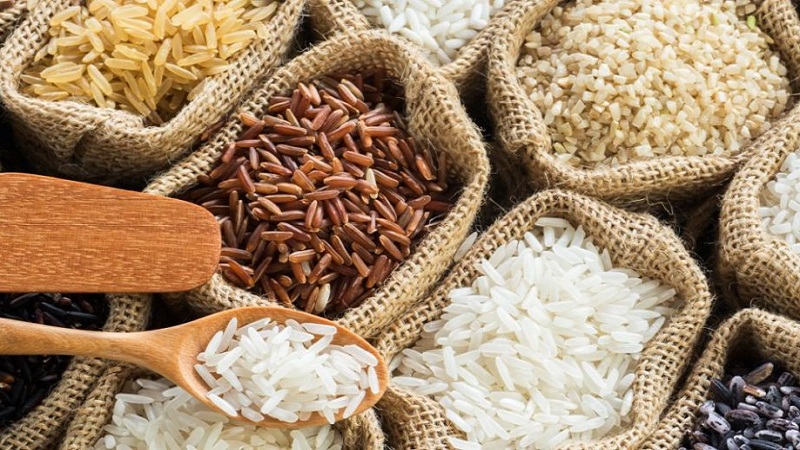
Rice shown to be eaten by pregnant women (moderately, to avoid constipation) and obese people.
Reference. Abuse of dishes from white polished rice grains is fraught with constipation, pain in the stomach.
Varieties and their physical properties
This cereal is represented by 20 botanical species, 150 varieties... There are 8000 agricultural varieties of this grain crop.
Such classifications of rice are popular:
- by color;
- by the length of the grains;
- by the way of processing.
By shape and type of grain
The grain size of rice is:
- long-grain;
- medium grain;
- round grain.
Long-grain
The variety is popular all over the world. It is characterized by a grain length of 6-8 mm... They contain a minimum of starch and are translucent in appearance. When cooking, they practically do not stick together.
Reference. Long-grain variety great for cooking Uzbek pilaf.
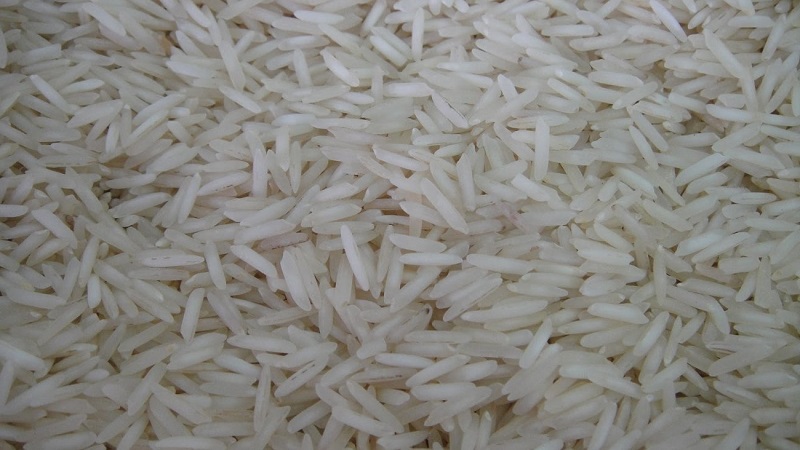
Medium grain
The length of the grains of this type of cereal is 5-6 mm... They are high in starch content. They are white in color. They stick together during cooking.
Reference. Cooks recommend using medium-grain rice for risotto or soup.
Kruglozerny
Round grain rice characterized by a grain length of 4 mm, a width of 3 mm... In Russia it is called Krasnodar. The cereal is rich in starch and boils down to a creamy consistency.
Reference. This type of cereal is suitable for making puddings, casseroles, cereals.
By the method of grain processing
Rice is classified according to the processing applied to grains... It happens:
- brown or brown (unpolished);
- white (polished);
- steamed.
Brown
Brown, unpolished variety characterized by the presence of a bran shell on the grainsgiving them color. Unpolished cereals are rich in vitamins and minerals. Recommended for dietetic food.
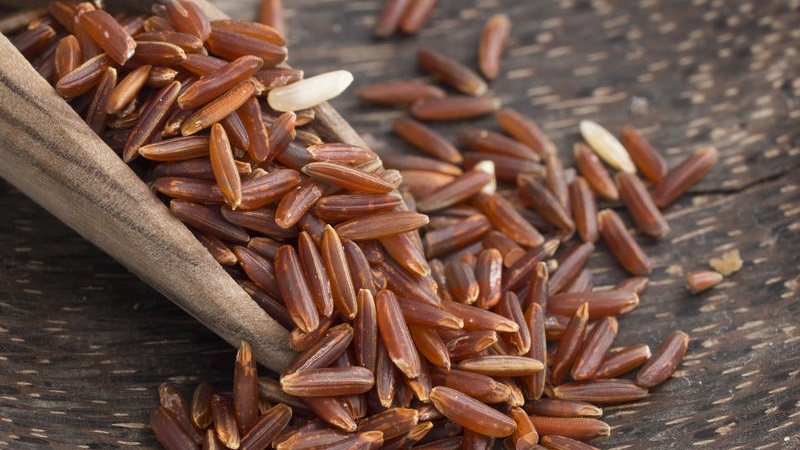
White
The cereal turns white after several stages of grain grinding... Its composition is poor in comparison with brown. But this variety is the most popular in the world.
Steamed
Steaming treatment allows grains to retain the lion's share of beneficial properties unprocessed rice. Parboiled cereal is translucent and brittle, has a yellowish color. Does not stick together when cooking.
Types of rice by color
Rice is not only traditionally white. Grains, depending on the variety, may have a different color.:
- brown;
- beige;
- yellow;
- red;
- purple;
- black.
Most popular rice varieties
Among the numerous varieties of grain crops, there are both popular ones that make up the "rice elite" and little-known ones.
Camolino
Camolino is a medium grain variety. He is not boiled during cooking, does not stick together... It is considered universal. Suitable for cooking cereals, puddings, risottos, pie fillings, adding to meatballs or cabbage rolls.

The secret of the variety is that before sending the grains for packing, they are treated with vegetable oil with the same name - "Camolino". This adds subtle amber notes to the grains, preserves their beneficial substances even after long heat treatment.
Basmati
Basmati has a delicate texture and a pronounced nutty flavor... The grains of this variety are the longest.
Reference. Basmati is one of the most expensive varieties. Especially appreciated in cooking for the quality of Indian Basmati. Pakistani is less valuable. Basmati, which was grown in the USA, cannot compare in taste and aroma with either Indian or Pakistani.
Arborio
Arborio refers to medium grain rice. Originally from Italy. The world knows him as risotto... It has a delicate creamy texture.
Reference. Experts advise not to digest Arborio. It should be cooked until half cooked (al dente state).
Jasmine
Grain varieties Jasmine refers to long-grain. Has a pleasant taste - jasmine notes are felt in its aroma.

The grains are not boiled during cooking... They turn out to be soft, but at the same time keep their shape, although they stick together a little.
Valencia
Valencia's round grain rice is similar to Arborio. Its second name is paella... It is used to prepare Spanish paella with seafood.
Devzira
Devzira is a variety that is grown in the Fergana Valley. Outwardly, the grains are thick, have a brownish tint., have a dense structure.
Variety great for cooking Uzbek pilaf.
Others
In the world there are many and lesser known varieties rice.
Wild rice
Native to North America. Variety possesses pleasant taste, low calorie. It satisfies hunger well. It is characterized by a rich and balanced composition of vitamins, minerals and fiber. Has a high protein content.
The black
Black variety known as Tibetan. Long-grain, one of the most expensive varieties... It is considered an aphrodisiac.
Grains of this variety turn purple during cooking.
Reference. Best of all Black rice is suitable for cooking sweet dishes, as it has a rich nutty flavor.
Red
Red rice has a characteristic color. It is a product that is grown in the south of France. They call him Camargue ("Camargue").

The homeland of the variety is Thailand. Red rice is a long grain variety... Has a nutty flavor.
In India or Sri Lanka, another variety of red rice is grown - Samba. It belongs to the medium grain variety.
The least common red medium grain cereal from Bhutan is Bhutanese red rice.
Criterias of choice
When choosing rice, pay attention to such criteria.:
- date of manufacture (the product is stored from one year to 18 months);
- the size and shape of the grains (a quality product has grains of the same size);
- the color of the rice (high-quality should be translucent);
- the absence of impurities, debris, insect larvae in the package;
- the presence on the packaging of the GOST mark, which guarantees the quality of cereals.
The highest quality rice is produced by eastern countriesharvesting up to four times a year.
A variety of cereals is chosen taking into account the dish, which they plan to cook from it:
- long-grain product is suitable for pilaf, salad, soup, garnish for meat, fish;
- risotto, paella, porridge are made from medium grain;
- round grain is suitable for puddings, cereals, sushi, casseroles and desserts.
Application of rice
Rice is a popular food crop around the world. Applicable not only in cooking, but also in folk medicine thanks to the composition rich in vitamins and microelements.
In cooking
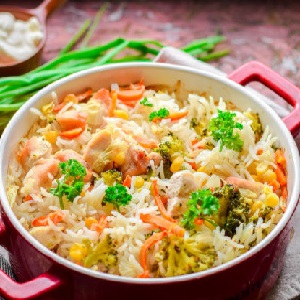 Groats from this cereal used in the preparation of first and second courses, desserts... The grains make an excellent side dish for meat and fish. They are used for sushi, pilaf, cereals and soups.
Groats from this cereal used in the preparation of first and second courses, desserts... The grains make an excellent side dish for meat and fish. They are used for sushi, pilaf, cereals and soups.
Boiled glutinous cereals are used to cook meatballs, risottos, puddings. Loose from elongated grains is included in the preparation of pilaf in Uzbek.
Grain goes well with meat, poultry, fish, seafood, vegetables... Its taste is well emphasized by broths, spices like turmeric, cumin, cinnamon. It is seasoned with butter, lemon juice, any sauce.
Reference. Rice is applicable not only for soups, cereals and desserts. Alcoholic drinks are made from it in China and Japan.
Cereal groats are suitable for making sweets: casseroles, puddings, sweet cereals with nuts, raisins, honey. Kozinaki is made from puffed rice grains.
In folk medicine
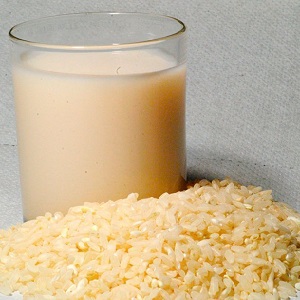 Traditional oriental medicine suggests using rice grains in recipes that help against cancer, in particular stomach cancer... They are used as a sorbent for poisoning.
Traditional oriental medicine suggests using rice grains in recipes that help against cancer, in particular stomach cancer... They are used as a sorbent for poisoning.
The cereal has astringent, sedative, diuretic properties... It is used for stomach ailments, diarrhea, nausea. Rice recipes are recommended by traditional medicine to relieve inflammation.They help get rid of psoriasis and other skin conditions.
For medicinal purposes applicable decoction... To obtain it, 1 tbsp. l. rice grains are brewed with a glass of water, boiled for 15 minutes and filtered. It helps children with stomach upset, diarrhea.
Important! In traditional medicine recipes, polished grains are not used. Rice must be unprocessed.
For medicinal purposes also apply:
- rice flour or starch as a powder;
- bran;
- rice bran oil for healing ointments.
Conclusion
Rice is the most popular cereal, an indispensable component of a balanced diet. It is a valuable food product that is rich in vitamins and minerals. It does not contain harmful fats and cholesterol, it is applicable for the preparation of many dishes. Quality rice is successfully used not only in cooking, but also in folk medicine.